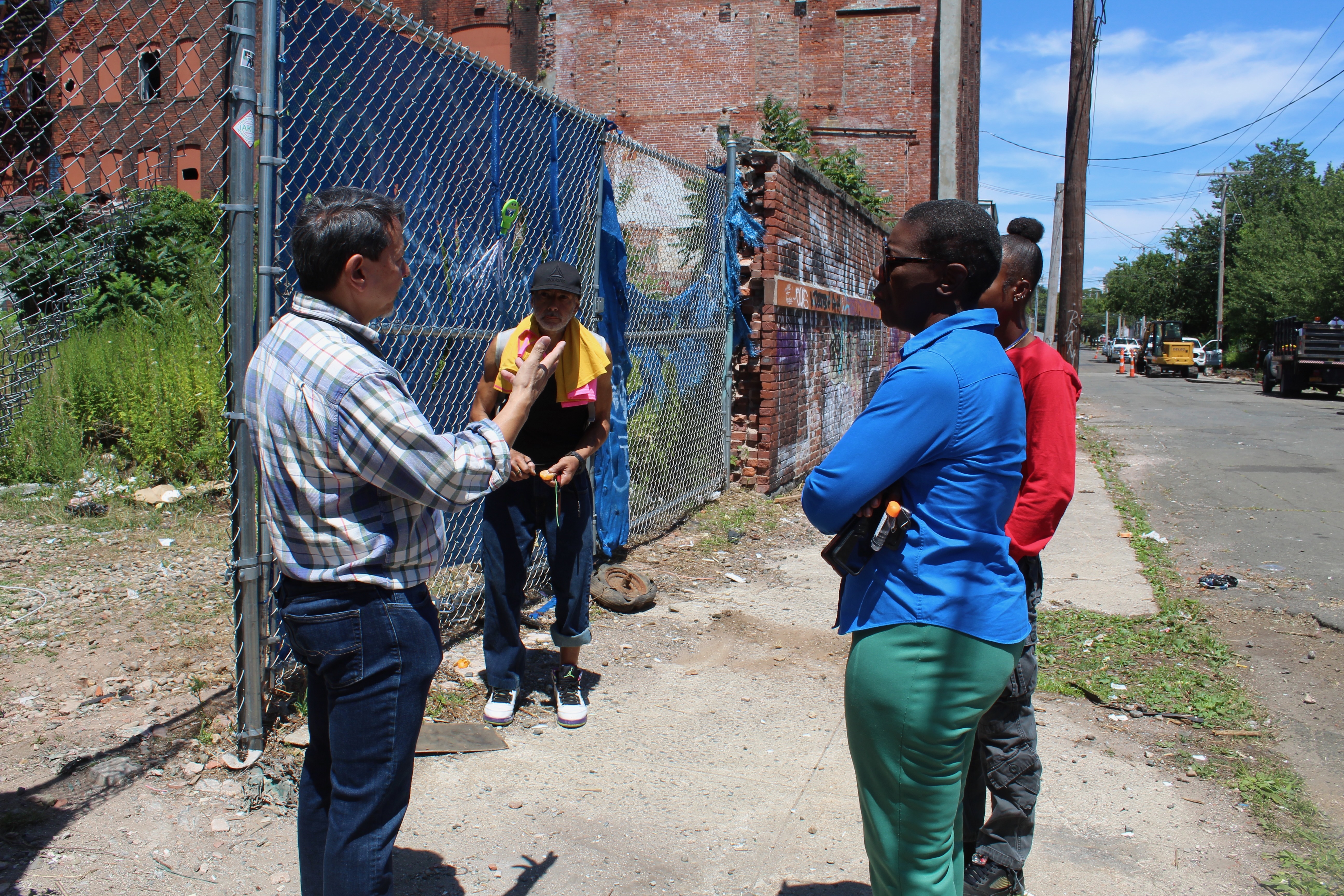
Shaunette James-Marquis from the Office of Housing & Homelessness Services describes options for shelter with one of the building's inhabitants.
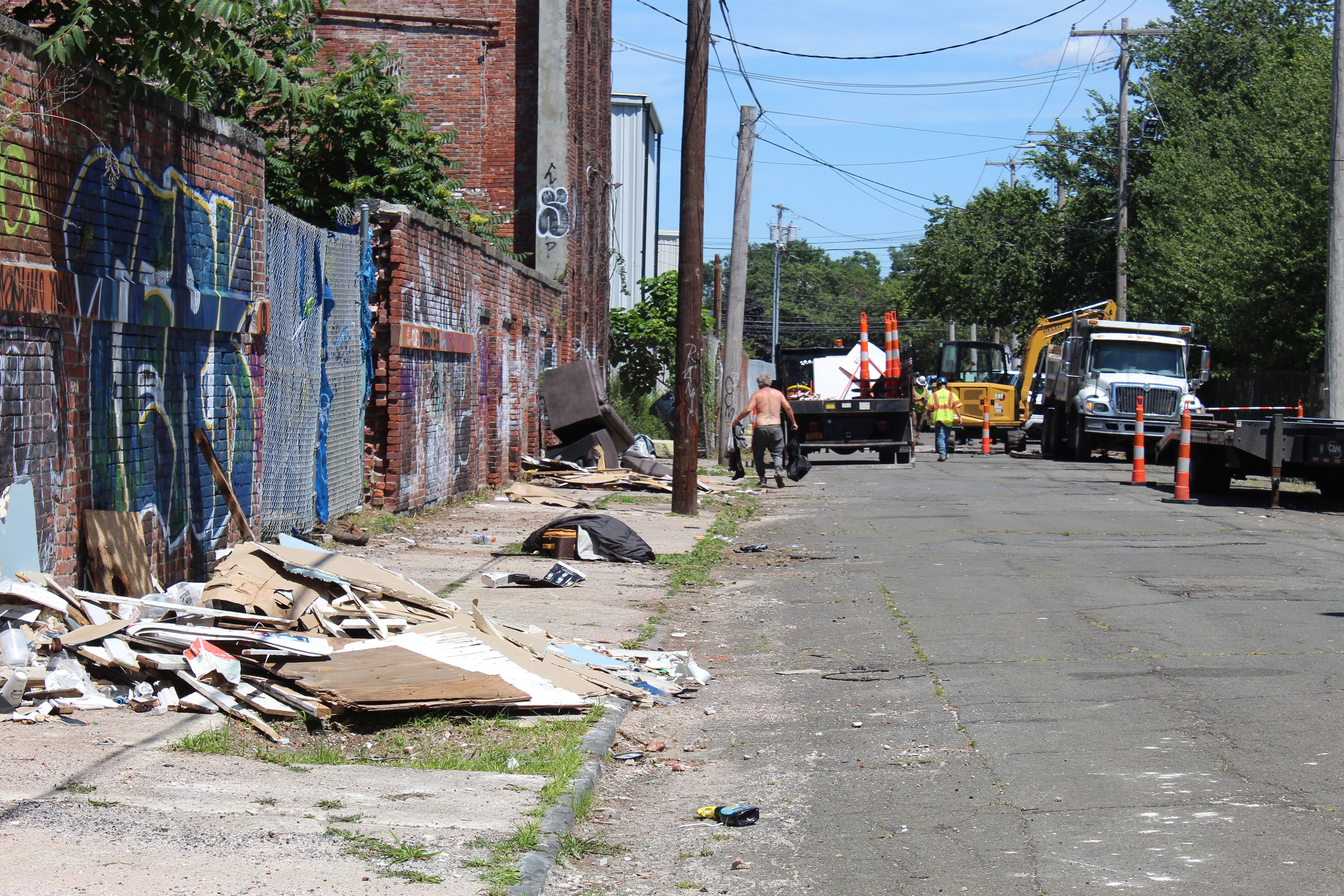
Wayne Miller grabs his belongings and leaves the factory.
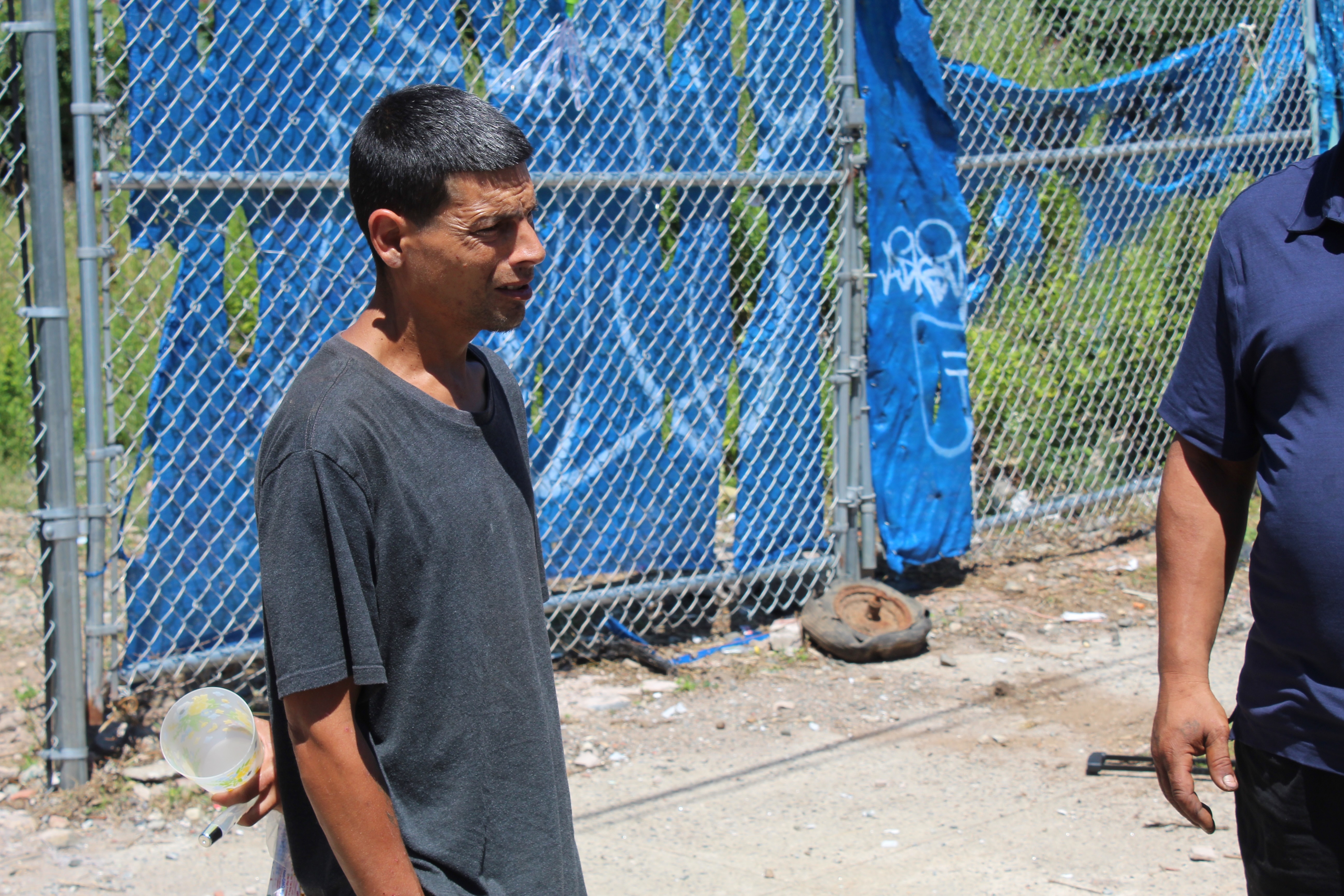
MONA MAHADEVAN Photos
Alex Reyes, among squatters told to leave.
Creditors installed a new chain link fence and asked eight squatters to leave the derelict Hamilton Street former clock factory as work continues on trying to turn the property into new apartments.
Creditor Bill Kraus and Roseanne Yagovane, daughter of creditor Agnes Yagovane, told the empty former factory’s remaining inhabitants Tuesday to collect their belongings and leave by 3 p.m. The pair were accompanied by representatives from the city’s Office of Housing and Homelessness Services and Elm City Compassionate Allies Serving our Streets (COMPASS), who offered support to residents as they packed up.
By the time outreach workers arrived, all but two of the building’s inhabitants had already departed with their belongings.
The city has been “great to work with,” Kraus said later that afternoon.
The renewed efforts to clear the property come as creditors push forward on a Chapter 7 involuntary bankruptcy petition against the building’s owner, Taom Heritage New Haven LLC. Taom Heritage purchased the ex-clock factory at 133 Hamilton St. in 2018 with plans to convert the property into 130 apartments, but instead allowed the site to slip into tax foreclosure and dangerous disrepair. Through the petition, creditors hope to advance a broader long-stalled plan to have a developer (now the Housing Authority of New Haven, if the owner can clean up the site) transform the blighted property into new apartments.
Kraus told the Independent on Tuesday that the creditors had negotiated a private agreement with Scott Reed of Oregon-based Reed Community Partners, Taom Heritage’s primary owner, outside of the courtroom.
In that agreement, Agnes Yagovane, the widow of the building’s previous owner, provided a no-interest loan earmarked for efforts to secure the building. Kraus said the creditors felt the need to organize and pay for the work of removing the individuals who have been staying in the dangerous complex.
One of those residents on Tuesday, Wayne Miller, dragged a twin-sized mattress and dark brown suitcase out through the building’s courtyard gate.
He said he plans to sleep under a bridge near Hamilton Street, but he worries about having the strength to carry his belongings.
“I haven’t been sleeping, haven’t been eating,” he said.
He said he fell on hard times when his wife slipped into a four-month coma. He said he spent thousands of dollars on finding and helping her.
Once she was discharged from the hospital, the couple was placed into an emergency shelter near Route 80, but Miller said he was kicked out for urinating in the lobby.
He described the former clock factory as infested with rats and roaches and lamented the near-constant thefts that take place there. He only stayed, he said, because he had nowhere better to go.
Another now former resident, Alex Reyes, said he spent nearly a year in the building before moving into his mom’s apartment. He recalled how Shaunette James Marquis, an outreach worker from the city’s Office of Housing and Homelessness Services, found him a temporary hotel room during a previous attempt to clear the site.
“It’s not right to live here,” he said. “It’s dangerous.” But he preferred the factory to the street, as the factory at least allowed him to hide the place where he sleeps.
Watching a police officer scope out the building, Reyes shook his head in defeat.
“We’ve already passed through this,” he said. While he appreciated the help from James-Marquis, he said, he felt it was “not that good” and is still struggling to get back on his feet. He hopes to find a construction job and make enough money to afford his own place.
His friend Luiz Lopez stood nearby snacking on Wonder white bread. He said in Spanish that he did construction for Mandy Management until he got into a major accident that left him unable to work. Now that the clock factory building is being boarded up, he is not sure where he will go.
Kraus and Yagovane said they are not that concerned about residents like Lopez and Miller returning to the building, but they do worry that the more aggressive trespassers, such as vandals and scrappers, will break in and leave the dangerous property accessible to new squatters, as well as groups of young kids who ride their bikes nearby.
On Tuesday, they put up new fences and asked nearby business owners to call the police if they spot trespassers.
Kraus and Yagovane said their efforts would be successful if sustained over time, something they worry will be difficult without an owner committed to securing and cleaning up the site.
As of Wednesday morning, Kraus said there are no squatters or leftover personal belongings inside the building. Potentially, with the city’s help, Kraus plans to spend the next few days securing other openings into the property and clearing the complex of mattresses, tires, and other debris.
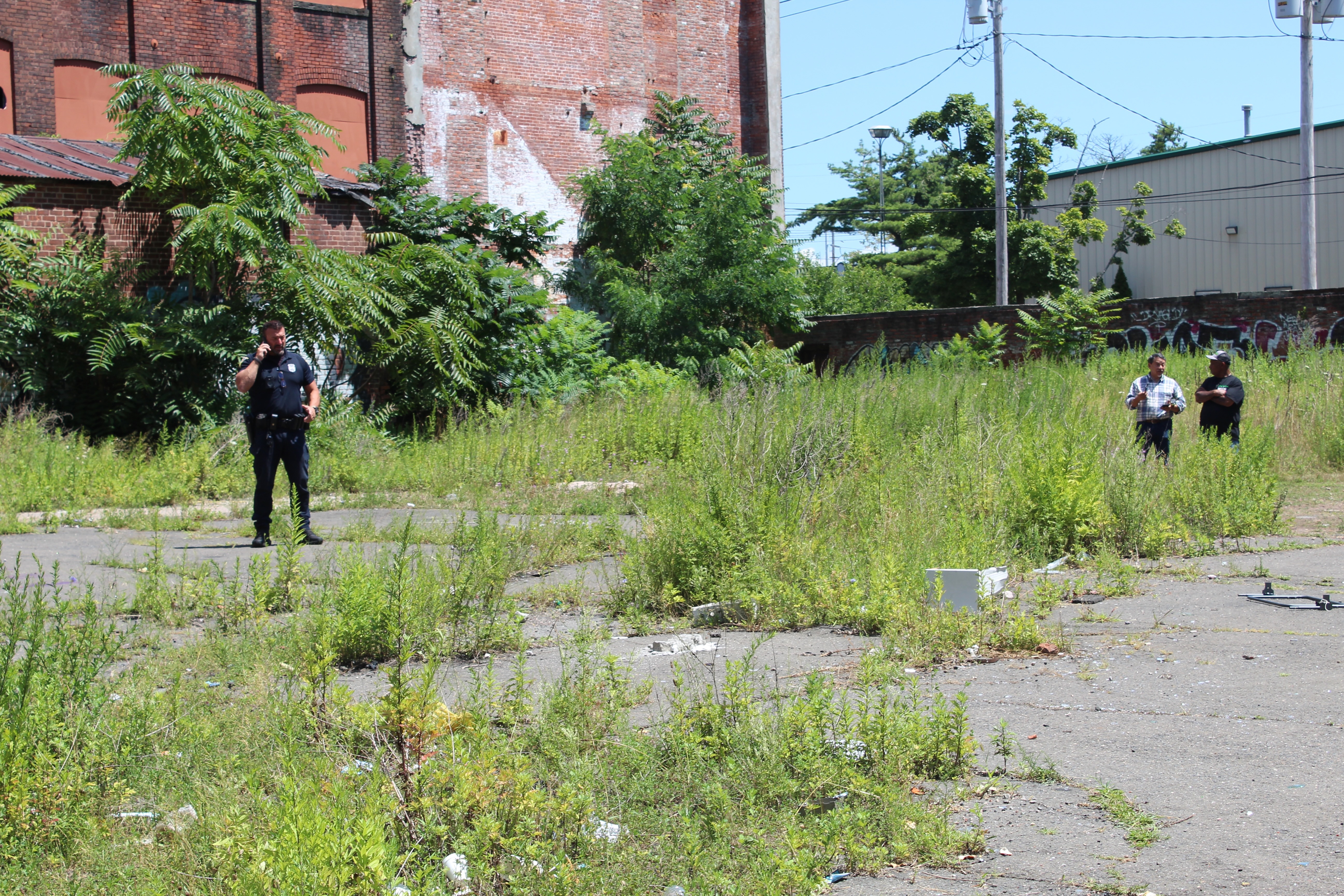
Officer John Barbetti assists with Kraus's efforts to escort residents out of the building.
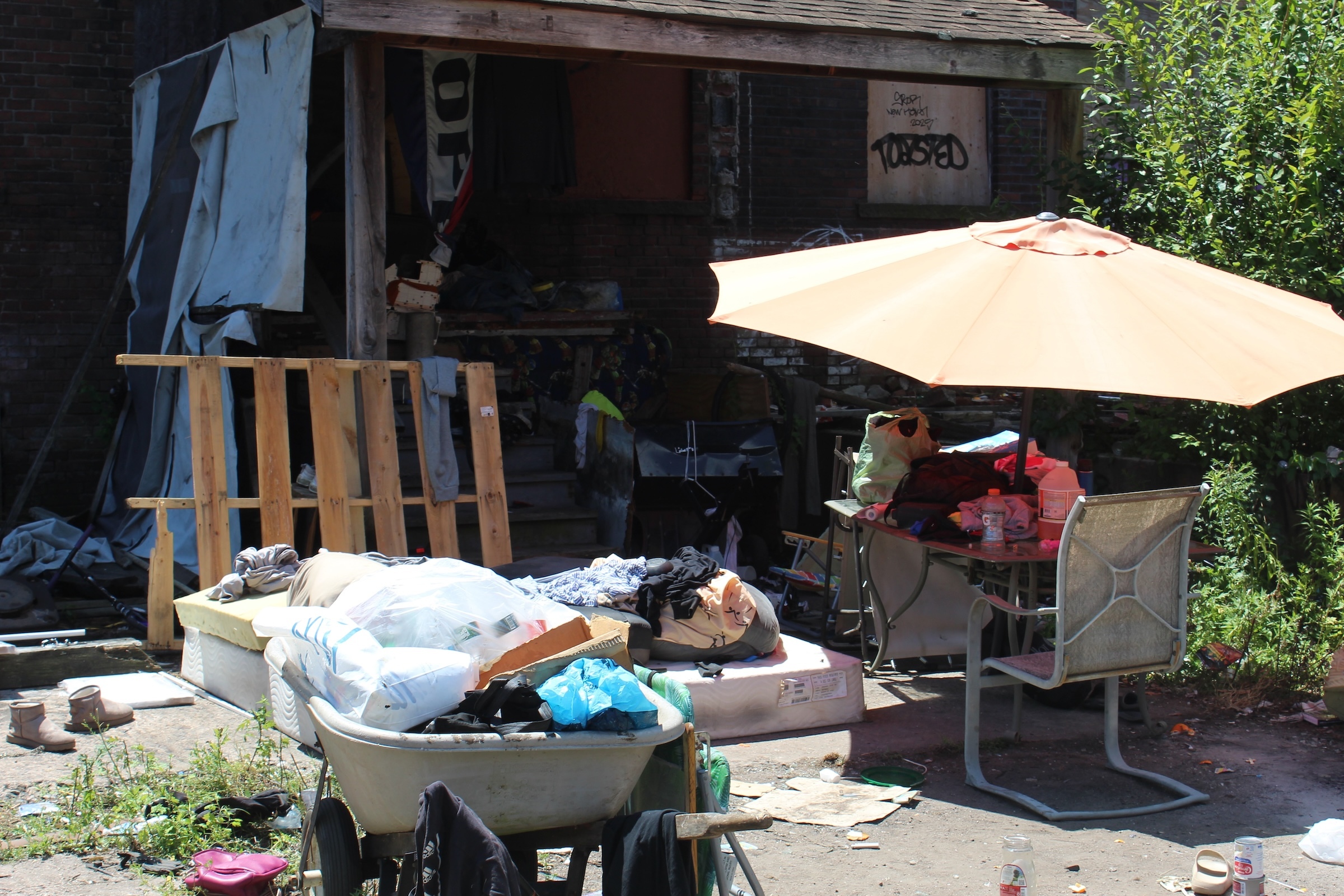
Many of the residents sleep here, in a porch-like shelter with a fire pit out of view.
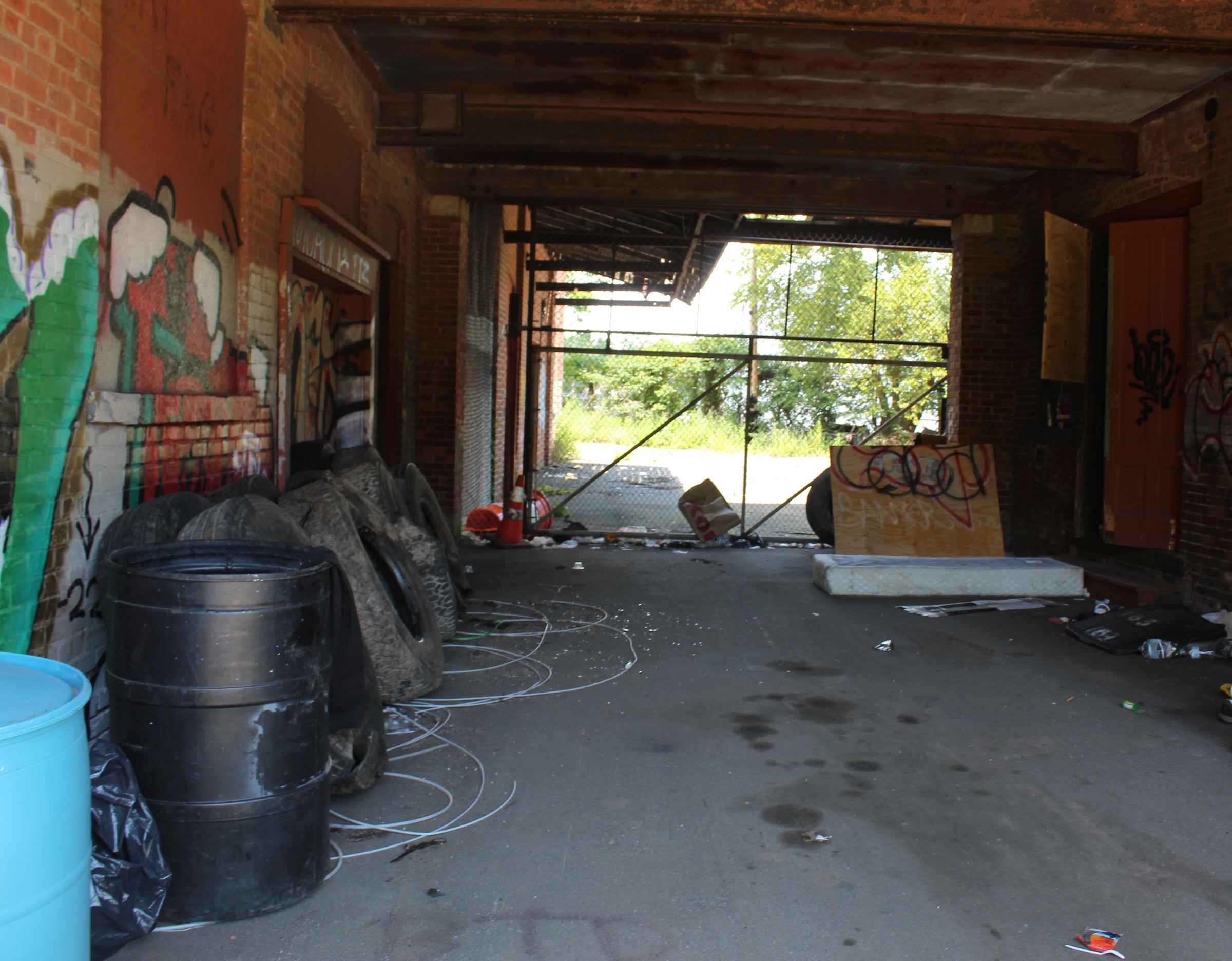
Others live in a shady underpass next to a handful of tires, a major fire hazard.
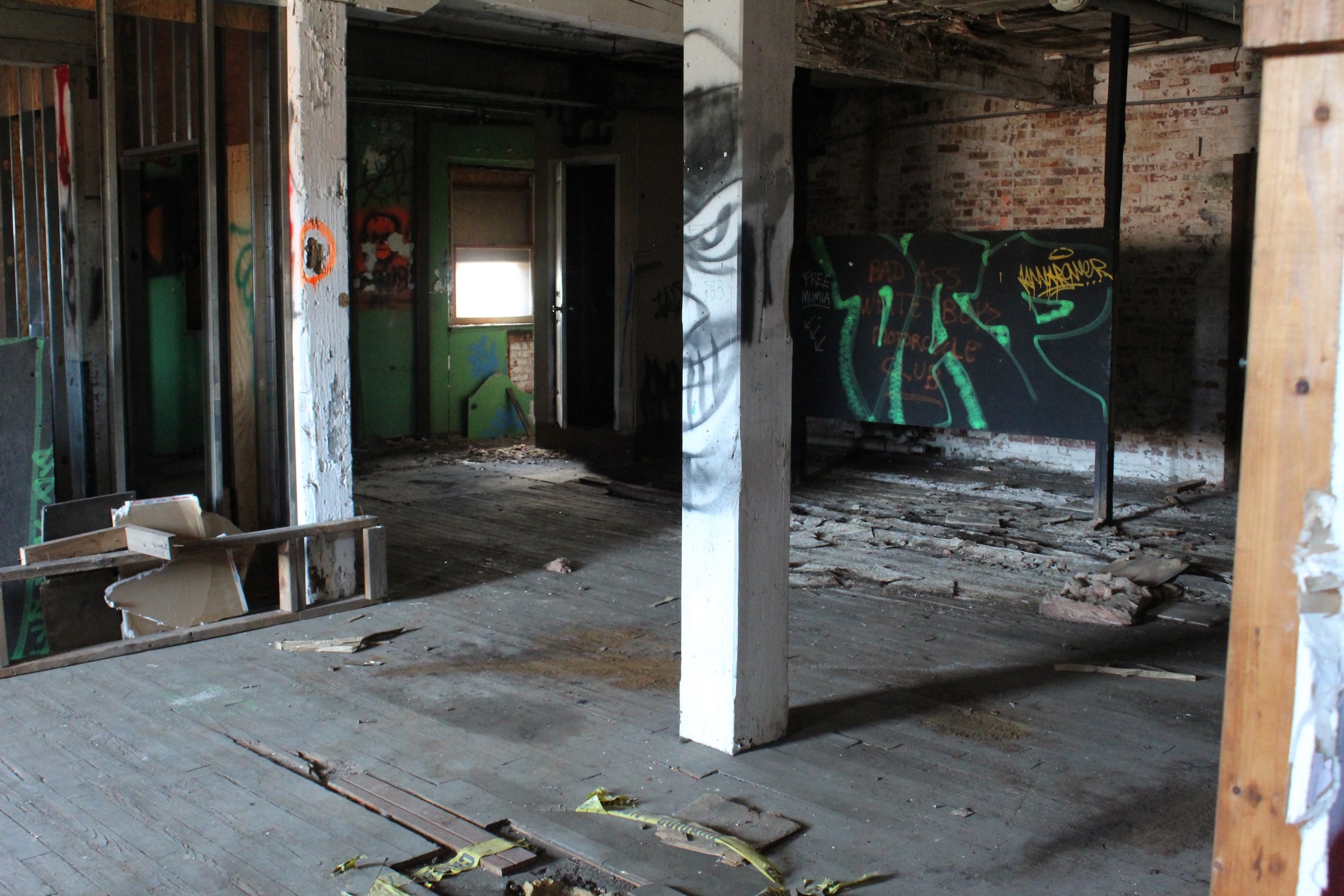
Inside of the building, inhabitants erected barriers to prevent people from stealing their belongings.
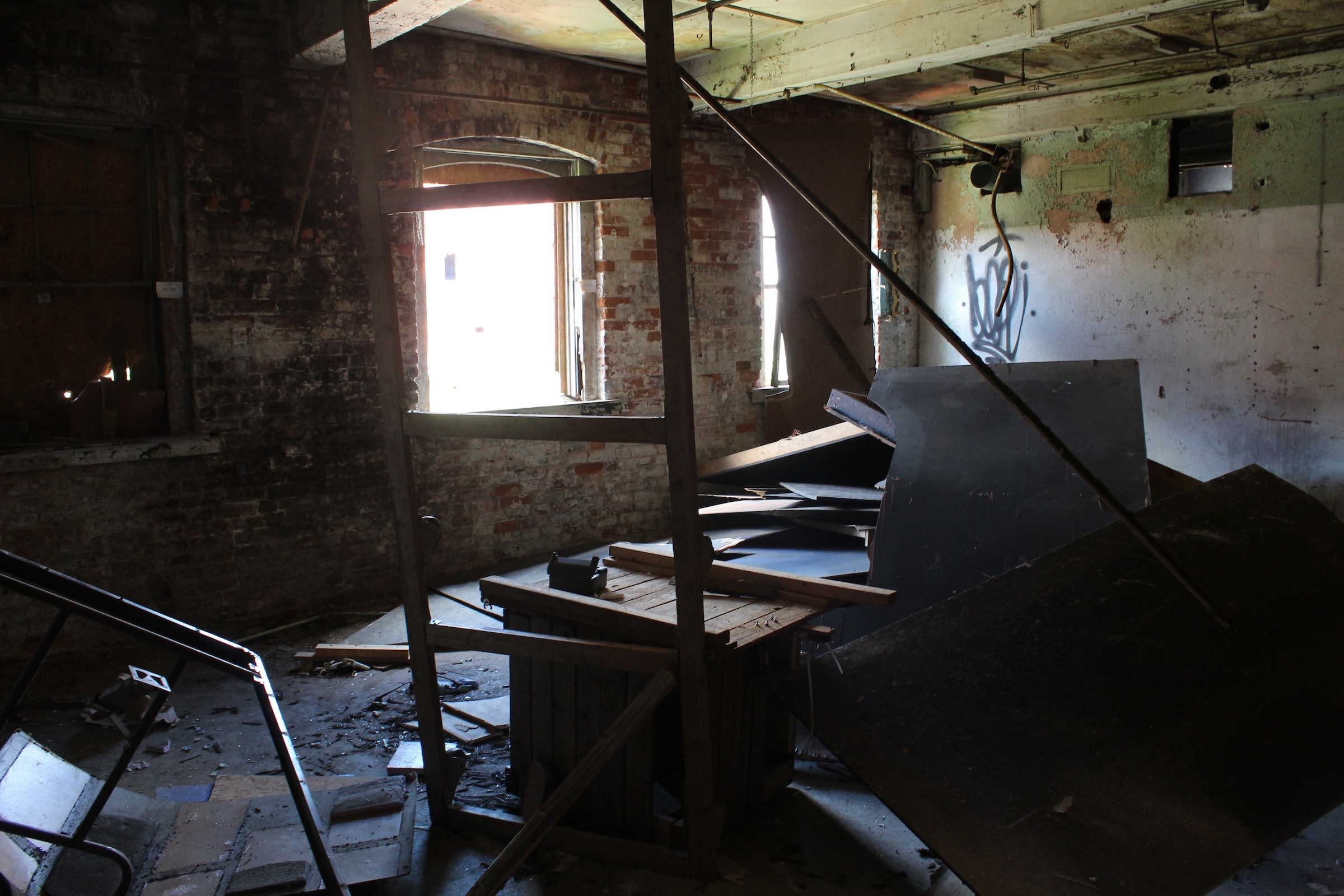
Most of the rooms in the building are stacked with wooden planks and other hazards.
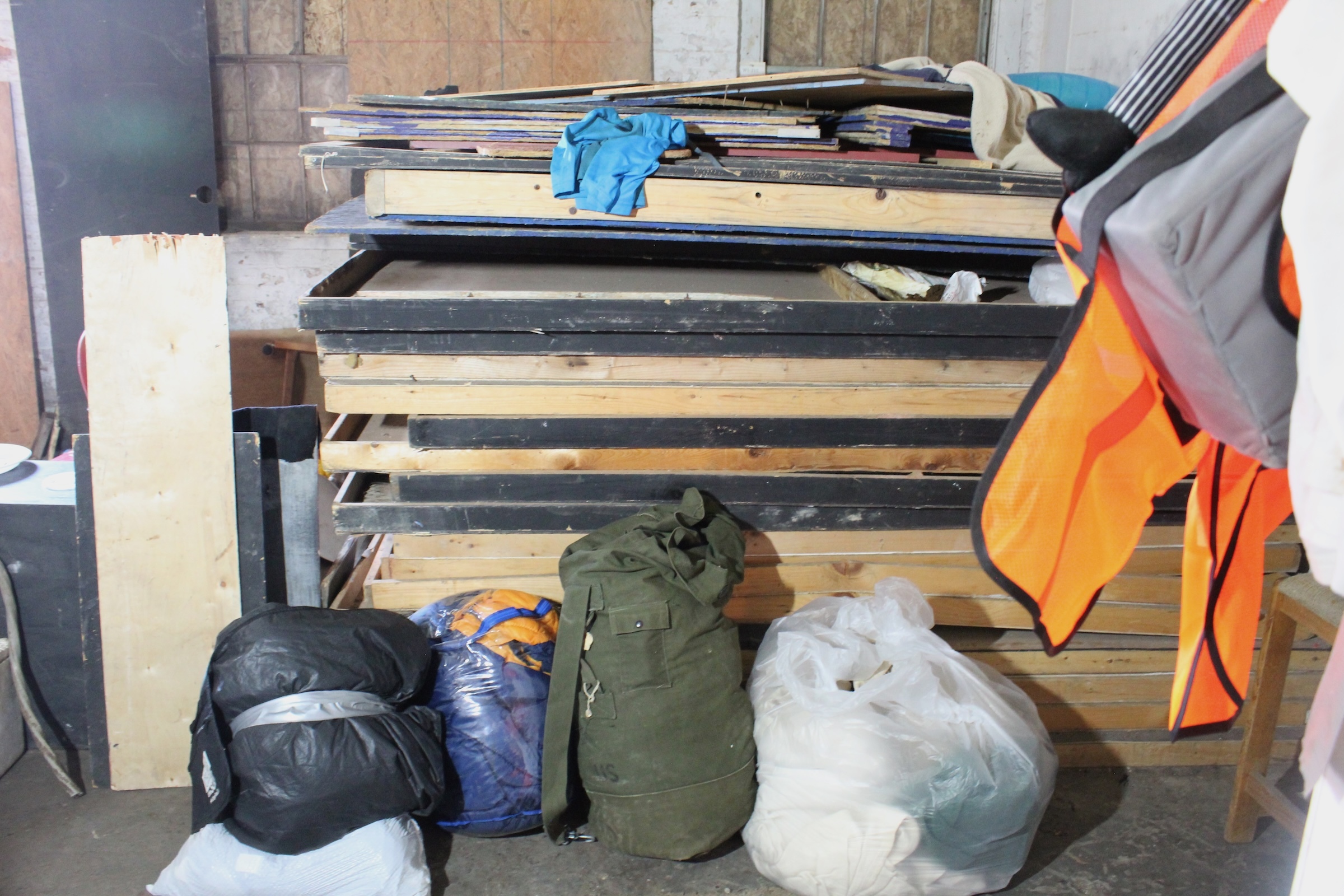
A group of people packed up their belongings, which they were warned would be thrown away if not collected by 3 p.m.
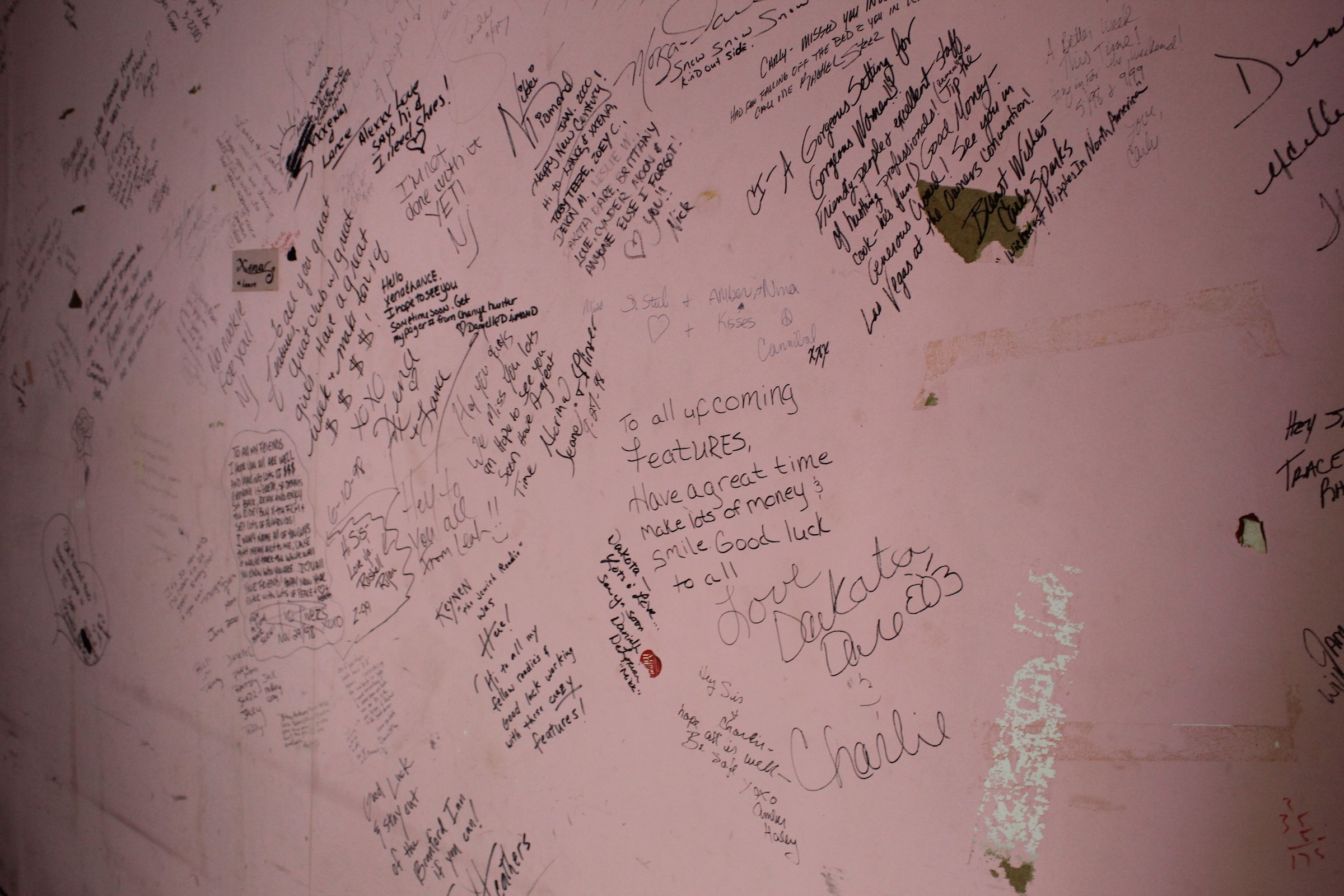
Remnants of the building's former life as a strip club.
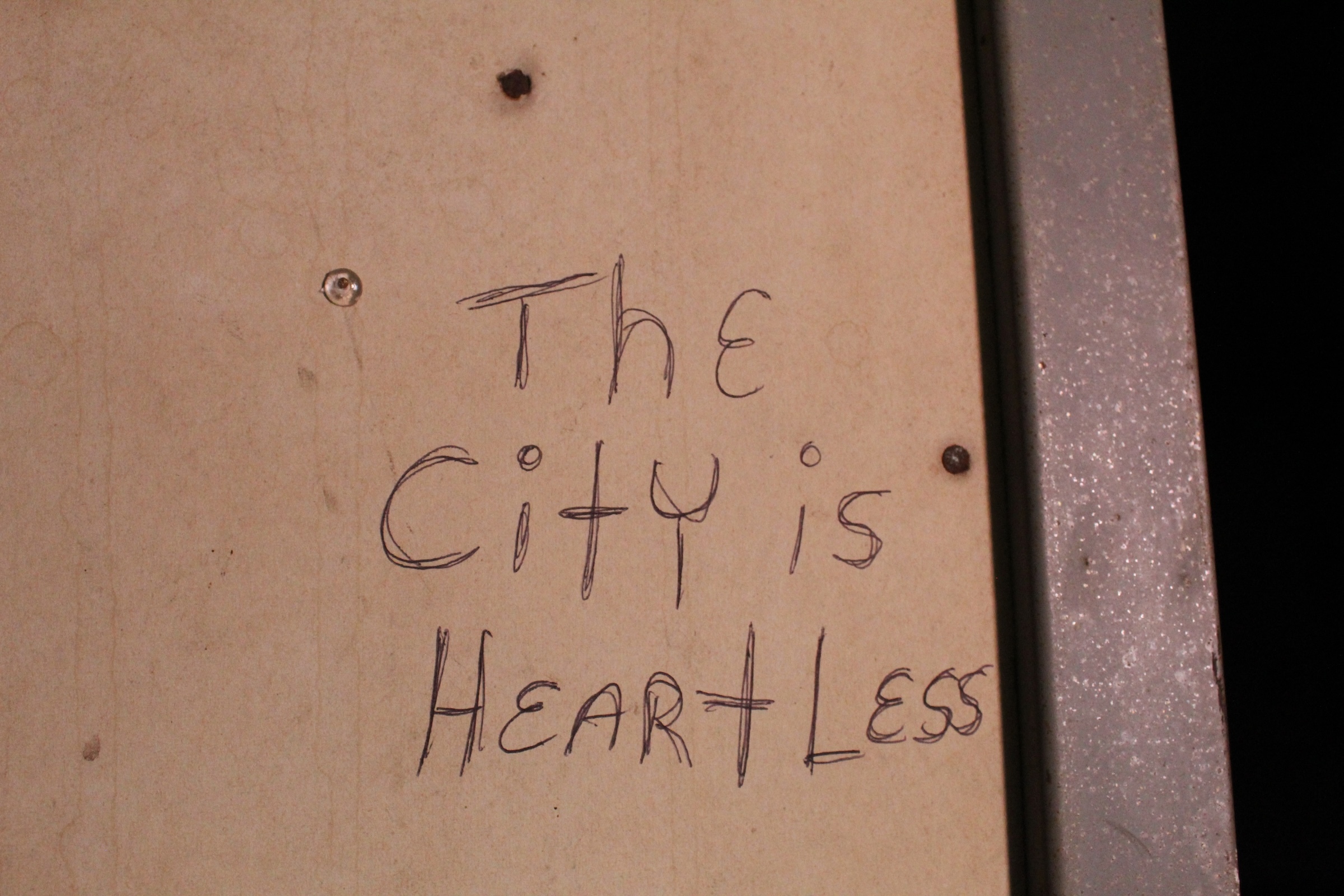
Graffiti from the residents.
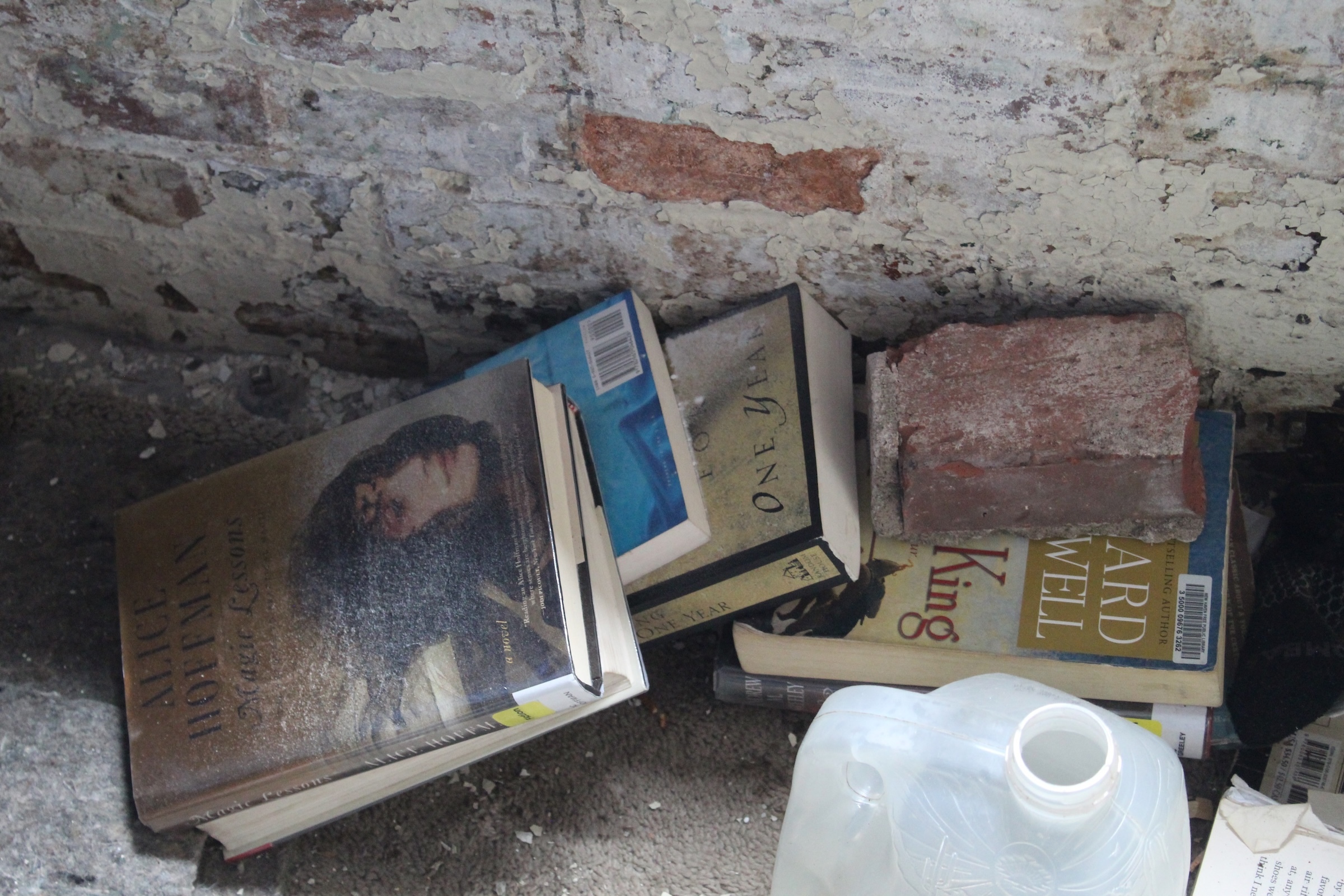
A stack of books belonging to one of the residents.
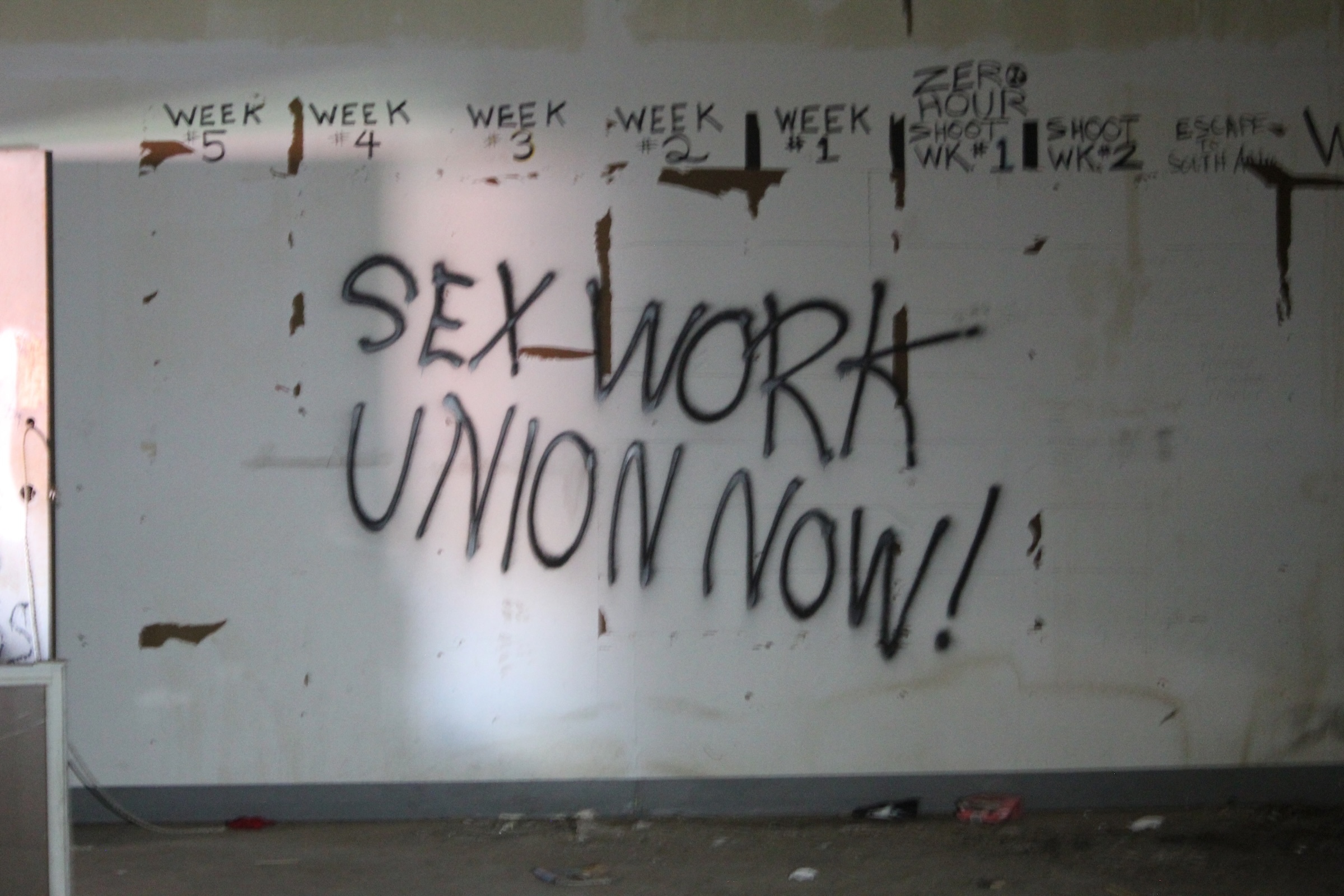
Writing from the building's former inhabitants, strip club employees, alongside graffiti from the squatters.